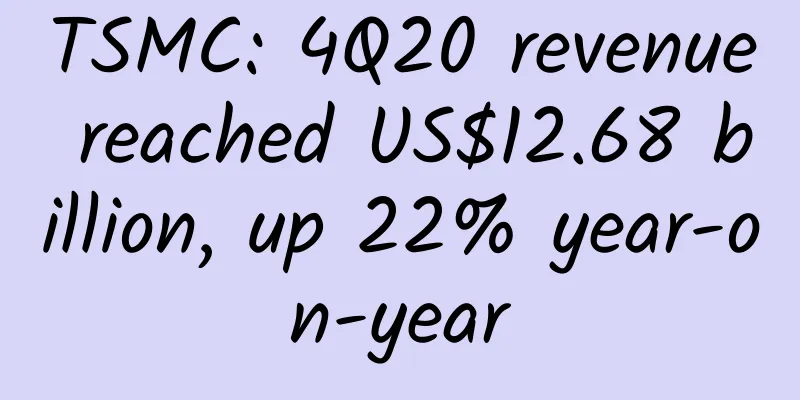Energy conservation without loss? Is South Korea's discovery of "room temperature superconductivity" reliable this time?

|
A team of physicists from South Korea recently uploaded two papers to the preprint website arXiv, claiming to have discovered the first superconductor at room temperature and normal pressure. The paper claims that under normal pressure conditions, a modified lead apatite (referred to as LK-99 in the paper) can behave as a superconductor below 127°C. As soon as the paper was published, it sparked heated discussions on the Internet. Screenshot of the paper on arXiv Image source: Reference [1] When you read this news, you will definitely have the following questions: Why is there room temperature superconductivity again? Why is there such a big noise again? And why does it feel so familiar? Too long to read Superconductivity is a physical phenomenon in which the resistance of a material becomes zero at a certain temperature; The application of superconductors is expected to bring about great changes in science and technology, but the application is limited due to the low superconducting transition temperature. Superconductors at room temperature are the ultimate dream of superconductivity researchers; The Korean paper that sparked public opinion has not yet passed peer review. We need to be cautious about the results claimed in the paper, and further experimental verification is needed. What is superconductivity? In physics, superconductivity is a phenomenon in which the resistance of a material becomes zero when the temperature is below a certain level. The material after the transformation is called a superconductor. It is mentioned in middle school textbooks that in a circuit, the charges in the wires will move like runners when driven by voltage, thus forming an electric current, but the resistance of the conductor will hinder their movement. If the circuit is made of a superconductor, the electric charges can run freely in the circuit, and the current will continue to flow. In a loop made of superconducting lead, the current can be observed to show no signs of weakening for months. Superconductivity was discovered by Onnes in 1911 Image source: Nobel Prize official website In addition to zero resistance, superconductors have another peculiar property, called perfect diamagnetism. When a material is transformed into a superconductor, it is like a monk using a golden bell. The magnetic field in the body will "repel" almost all magnetic flux, and the magnetic lines of force cannot penetrate the superconductor. This phenomenon is also known as the Meissner effect. Based on the complete diamagnetism of superconductors, an interesting experiment can be done: place a magnet directly below the superconductor. The magnet generates a magnetic field around it, but the interior of the superconductor does not allow the existence of a magnetic field, thus generating an opposite magnetic field that repels the magnet. If the repulsive force is balanced with the gravity of the superconductor, the superconductor can be suspended in mid-air, just like a scene from a science fiction novel. Copyright images in the gallery. Reprinting and using them may lead to copyright disputes. Later, physicists concluded that to determine whether a material is a superconductor, it depends on whether it has both zero resistance and complete anti-magnetic properties, both of which are indispensable. Because of its special properties, superconductors have sparked people's endless imagination about its future applications. For example: Zero-resistance circuits have almost no heat loss. Using superconductor materials for long-distance, high-capacity power transmission can greatly reduce energy waste and improve energy efficiency. The use of superconducting wires in generators and motors can greatly increase the current intensity and output power; Using superconductors to make connections for very large-scale integrated circuits can solve heat dissipation problems and increase computing speed. The practical application of superconductors has the potential to bring about huge and profound changes in science and technology. Copyright images in the gallery. Reprinting and using them may lead to copyright disputes. Unfortunately, ideals are full of hope, but reality is very skinny. So far, the practical application of superconductors is still mainly concentrated in specific situations such as particle accelerators, magnetic levitation, and superconducting quantum interference devices. In the field of power engineering, especially the long-distance transmission of superconducting wires, which is highly anticipated, large-scale application is still a long way off. What limits the wide-scale application of superconductors? There is only one fundamental reason: temperature. High-temperature superconductors The temperature at which a material turns into a superconductor is called the superconducting critical temperature (Tc). Only below this Tc can the superconductor maintain its superconducting properties. However, the Tc of most materials is very low, basically below -220°C, and requires the use of liquid nitrogen or liquid helium to maintain a low-temperature environment. Imagine working so hard to build a superconducting transmission line of several hundred kilometers, which needs to be cooled by immersing it in liquid nitrogen the entire time. How expensive it would be! Therefore, in order to make superconductors more widely used, it is necessary to find materials with higher Tc and preferably those that can maintain superconducting properties at room temperature (about 25°C). Since the discovery of superconductivity, physicists have never stopped searching for high-Tc superconductors, but the search has always been difficult. In the first 70 years after the discovery of superconductivity, it was difficult to break through the upper limit of Tc even at -240℃. Fortunately, physicists later discovered superconductors with Tc exceeding -173℃. The current record holder for the highest critical temperature of superconductors is hydrogen sulfide under 1.5 million atmospheres of pressure, with Tc of about -73℃, which is still a certain distance from the ideal room temperature. Such high pressure conditions also mean that it is difficult to apply in practice. South Korea's "room temperature superconductivity" Seeing this, if you still remember the content at the beginning, you will find how shocking the paper published by this Korean team is - they claimed to have discovered a superconductor with a Tc of about 127°C under normal pressure, not only bringing Tc to room temperature, but also directly raising it by 200 degrees! According to the paper, they combined a variety of materials containing lead, copper and phosphorus and heated them separately to prepare a copper-doped lead-apatite crystal, which they called LK-99. The photo of LK-99 provided in the paper is from: Reference [1] They then measured the physical properties of LK-99. According to the experimental results they gave, when current is applied to LK-99 below 127°C, the voltage is basically zero within a certain current range, showing the characteristic of zero resistance. The paper claims that when the temperature, current and magnetic field reach certain critical values, the zero resistance phenomenon disappears, which is consistent with the properties of superconductors. Before reaching the critical current, the voltage of LK-99 tends to zero. Shows zero resistance Image source: Reference [1] In addition to zero resistance, another important property of superconductors is complete diamagnetism. In response, the team provided experimental data charts and published a video demonstration online. In the video, at room temperature and pressure, a small piece of LK-99 sample was placed on a magnet, with one end close to the magnet and the other end spontaneously lifted up, as if it was subject to some kind of repulsive force. Video provided by the paper team to demonstrate the diamagnetism of the sample Video source: Reference [1] However, the lift in the video is not like the Meissner effect of many superconductors, which is completely suspended on the magnet. In fact, some strongly diamagnetic materials, such as ferromagnetic powder compacts, will also repel magnets under strong magnetic fields, resulting in a similar lift effect as in the video. Therefore, this video alone cannot prove that LK-99 has complete anti-magnetic properties like a superconductor. But the paper team believes that their series of experiments have verified that LK-99 is a superconductor at room temperature and normal pressure. They also gave a theoretical explanation, believing that when some of the lead ions in lead apatite were replaced by copper ions, the volume shrank slightly, causing the material structure to deform, and then a superconducting quantum well was generated on the internal interface, thus producing the superconductivity phenomenon. The paper attempts to explain the principle of LK-99 room temperature superconductivity from a structural perspective Image source: Reference [2] However, the structure of LK-99 is significantly different from the mainstream high-temperature superconductors discovered previously, and the theoretical explanation they gave is still just a guess for now. The story of the boy who cried wolf You may have a sense of déjà vu about room-temperature superconductivity, probably because just in March of this year, there was another "blockbuster" related to room-temperature superconductivity that caused quite a stir among the public. At that time, at the American Physical Society meeting, physicist Ranga Dias from the University of Rochester and his team announced that they had achieved room temperature (about 21°C) superconductivity in materials in the lutetium-nitrogen-hydrogen system at a pressure of 1GPa (approximately 10,000 atmospheres). Ranga Dias, University of Rochester Image credit: University of Rochester However, just one week after Dias published his research, several experimental teams published papers stating that no superconductivity was found in repeated experiments on lutetium hydride compounds. Although Dias insisted that his experimental results were true and credible, his articles published in Nature and Physics Review Letters were retracted one after another due to suspicion of fraud, and the room-temperature superconducting material he proposed was also widely questioned as insufficient evidence. The resistance curve of lutetium-hydrogen-nitrogen material changes with temperature. No superconducting transition was found as low as 2K Image source: Reference [3] Compared with Dias' "discovery" in March this year, the superconductivity at 127°C under normal pressure in the Korean team's paper is even more shocking. So, will the "experimental results" of the Korean team end up being a controversial academic farce like Dias' claim to have discovered room-temperature superconductivity? It is worth mentioning that Dias’s paper was initially published in Nature. Although the experiment had not been replicated at that time, it had at least undergone a certain degree of peer review. This time, the Korean team’s paper was published on the preprint website arXiv, without any peer review process at all. The threshold for publishing papers on arXiv is very low. Usually, researchers upload a draft to arXiv to prove the originality before officially publishing their papers. The papers are often of mixed quality and the quality is difficult to guarantee. In fact, it is not just Dias. Almost every year, there are teams claiming to have discovered room-temperature superconducting materials, but so far none of them has been rigorously proven by experiments. A paper published on arXiv in 2016 claimed to have discovered a room-temperature superconductor with a transition temperature of 373K. Image source: Reference [4] For example, a paper uploaded in 2016 can still be found on arXiv, claiming the discovery of compounds with a superconducting transition temperature of around 373K (or 100°C). It also has multiple experimental data graphs and Meissner effect graphs, which are exactly the same as those in the Korean team's paper. However, the paper did not disclose the composition of the compound, the experimental process was not rigorous, and the authenticity of the suspension on the magnet was questioned. In the end, it did not pass peer review and was not formally published, and it did not attract any more attention. This 2016 paper also contained experimental diagrams similar to the Meissner effect, but their authenticity could not be proven. Image source: Reference [4] In contrast, this time the Korean team not only published the materials they used, but also introduced the detailed material preparation methods in the paper, and the material composition is relatively simple and clear. It is not difficult to prepare the same material to verify the experimental results of the Korean team. In fact, there is already a team that has started preparing the materials, and I believe that soon a scientific research team will provide experimental results under the same conditions to verify whether the results of the Korean team are correct. The paper provides a detailed preparation process of LK-99. Image source: Reference [1] Whether the LK-99 material is a groundbreaking discovery or just another academic blunder may be revealed in the next few days. As onlookers, what we should do is wait quietly and let the bullet fly for a while. References [1] https://arxiv.org/abs/2307.12008 [2] https://arxiv.org/abs/2307.12037 [3] Ming X, Zhang YJ, Zhu X, et al. Absence of near-ambient superconductivity in LuH2±xNy[J]. Nature, 2023: 1-3. [4] https://arxiv.org/abs/1603.01482 Acknowledgements: This article received professional guidance and help from Researcher Luo Huiqian from the Institute of Physics, Chinese Academy of Sciences. We would like to express our special gratitude! Planning and production Source: Guokr Author: Central Star Editor: Jin Yufen (Intern) |
<<: How does China's non-invasive brain-computer interface technology achieve "mind typing"?
>>: A glass of beer costs hundreds of dollars, is it a tax on your IQ?
Recommend
What kind of posts on Kuaishou can easily increase followers and become popular? What are the techniques to increase followers on Kuaishou?
This article mainly introduces what kind of posts...
After eating it for decades, I found out that bananas actually have radiation! Netizen: Is there any hope if I eat them frequently?
Bananas are sweet, soft and smooth, and are loved...
Constraints and ambitions of WeChat for Business
WeChat for Business is famous enough to save tens...
InnovationEye: UK Artificial Intelligence Industry Report 2021
InnovationEye has released the "2021 UK Arti...
After analyzing 670 million mobile app push notifications, we saw several interesting trends:
Push notifications are the cornerstone of every m...
Can eating more vegetables make you fatter? Many people don’t know this and still eat them every day…
Vegetables are an essential food for maintaining ...
Introverted personality: Have you “involved” yourself today?
Review expert: Chen Mingxin, national second-leve...
Three modes of mobile phone system development by Apple, Google and Microsoft
Since people entered the mobile Internet era to t...
Xiaohongshu Enterprise Account Certification Application Guide
According to the "2020 Xiaohongshu Double El...
Yingke has been removed from the shelves again. Will this be a sign that it is in trouble?
The rumors of "selling out" have just s...
Innovative operation activities: National Day operation activities based on gamification packaging
Nowadays, product operation activities are divers...
Want to write attractive copy? You have to overcome 4 big pits first!
Information is expanding, and all kinds of advert...
iOS10 SiriKit QQ Adaptation Detailed Explanation
1. Overview Apple opened the SiriKit interface to...
App Store September review rejection reasons ranking! Apple's review focus turns out to be these...
As an App promoter , one of the most painful thin...
How rare are black panthers in Africa? Only one has been photographed in more than 100 years
In many people's minds, black cats are always...
![[Talking about experience] About preventing iOS from being removed from the shelves and relisting!](/upload/images/67cc3d60615a4.webp)








